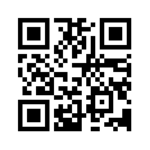The Schroth method was developed in Germany in the 1920s and then brought to the United States in 2005 by Dr. Manuel Rigo, MD and the Barcelona Scoliosis Physical Therapy School (BSPTS). The Schroth method applies scoliosis specific exercise to the 3-dimensional trunk shape in efforts to improve global posture. The primary goals of physical therapy treatment via the Schroth method are to stop or reduce curve progression at puberty, prevent or treat respiratory dysfunction, prevent or treat spinal pain, and improve aesthetics via posture correction.
AIS prevalence is estimated to affect 0.5-5% of the population and tends to be more common and more severe in girls than boys. Spinal deformity is most rapidly progressing around the time of puberty, and the earlier detection and treatment is started the better outcomes tend to be. There are researched guidelines used to determine if the child needs observation, scoliosis specific exercise, or bracing. In cases were bracing is recommended, physical therapy does not replace the need for a brace but can be used in conjunction with bracing to help achieve the goals listed above.
Education/certification in the Schroth method teaches clinicians to identify the child’s specific curve pattern so as to apply patient-specific exercise/treatment. Research indicates that about 50% of the scoliotic posture is structural (due to the shape of the bones in the spine changing), while another 50% is postural (due to the positional habits of the individual). This means that up to 50% of the scoliotic posture could possibly be improved with scoliosis specific exercise. Furthermore, there is evidence to suggest that when the posture component of scoliosis is addressed, the structural progression is less likely to occur.
Who would benefit from Schroth?
The treatment approach can be used to treat scoliosis patients of all ages and can be utilized to treat in all stages of scoliosis, including after surgery.
What are the exercises like?
Specific exercises are provided based on the curve patterns and severity, as well as the patient’s function and mobility. Schroth exercises are active and focused. The goal is to create awareness of the new posture and alignment though position, repetitions, and breathing.
The Schroth therapist guides the patient with tactile stimulus so the patient has an understanding of where they need to breathe and elongate to create muscle activation.
Will I be straight after the Schroth Method?
The main goal of the Schroth Method is to halt the progression of the curve and improve posture. Reducing the spinal curve depends on the length of time you have had scoliosis and many other factors, but some patients do see improvement of their curve.
How long will I be in therapy?
Your Schroth program will be based on your individual evaluation. Treatment sessions are typically 45 min long and can range from 5 sessions to up to 20 sessions. Continuation of your home exercise program is a lifetime commitment and is vital in order to maintain your postural correction. We do recommend re-evaluations periodically after completion of the main program. Please speak to your therapist about when you should return.
What do I wear to physical therapy?
Exercise attire is recommended. A sports bra (preferably not a racerback) is required for females for the patient and therapist to see the spine. A private room is available for your treatments.
If you have questions about scoliosis treatment please contact one of our trained Schroth providers at Kitsap Physical Therapy.

